How to Get Slope Right on Gravity-Fed Greywater Distribution Plumbing
How to use a tool box level to maintain a minimum 2% slope when installing greywater distribution pipe…
Gravity-fed greywater distribution plumbing, such as branched drain systems, should maintain a minimum 2% slope (1/4-inch drop per linear foot or 2-cm drop per linear meter). That way no water sits in the pipe and turns to stinky blackwater, and it will be far less likely that solids in the greywater flow will settle out and clog the flow.
My favorite tool for measuring pipe slope is an Empire 12-inch magnetic tool box level, with Vari-Pitch vials that read slope in 1/8th-inch increments. The vials can be turned to change the direction from which their markings can be read. All the following images use this tool.
Note that the following is meant as a supplement to the greywater-harvesting chapter in my book Rainwater Harvesting for Drylands and Beyond, Volume 2, 2nd Edition and Art Ludwig’s Create an Oasis with Greywater. Read those books, as they have key additional info not included here!
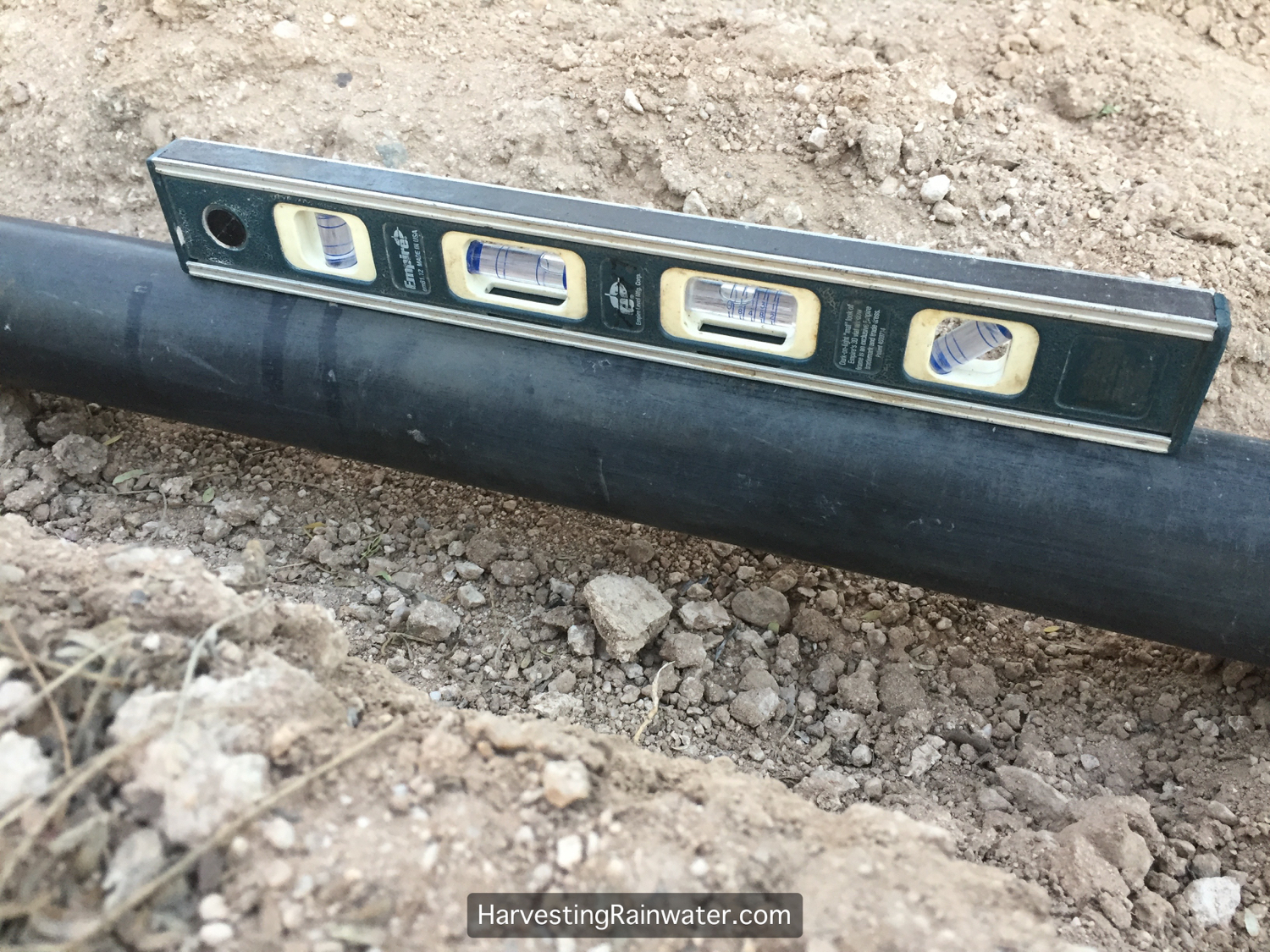
See next slides for close ups and different orientations
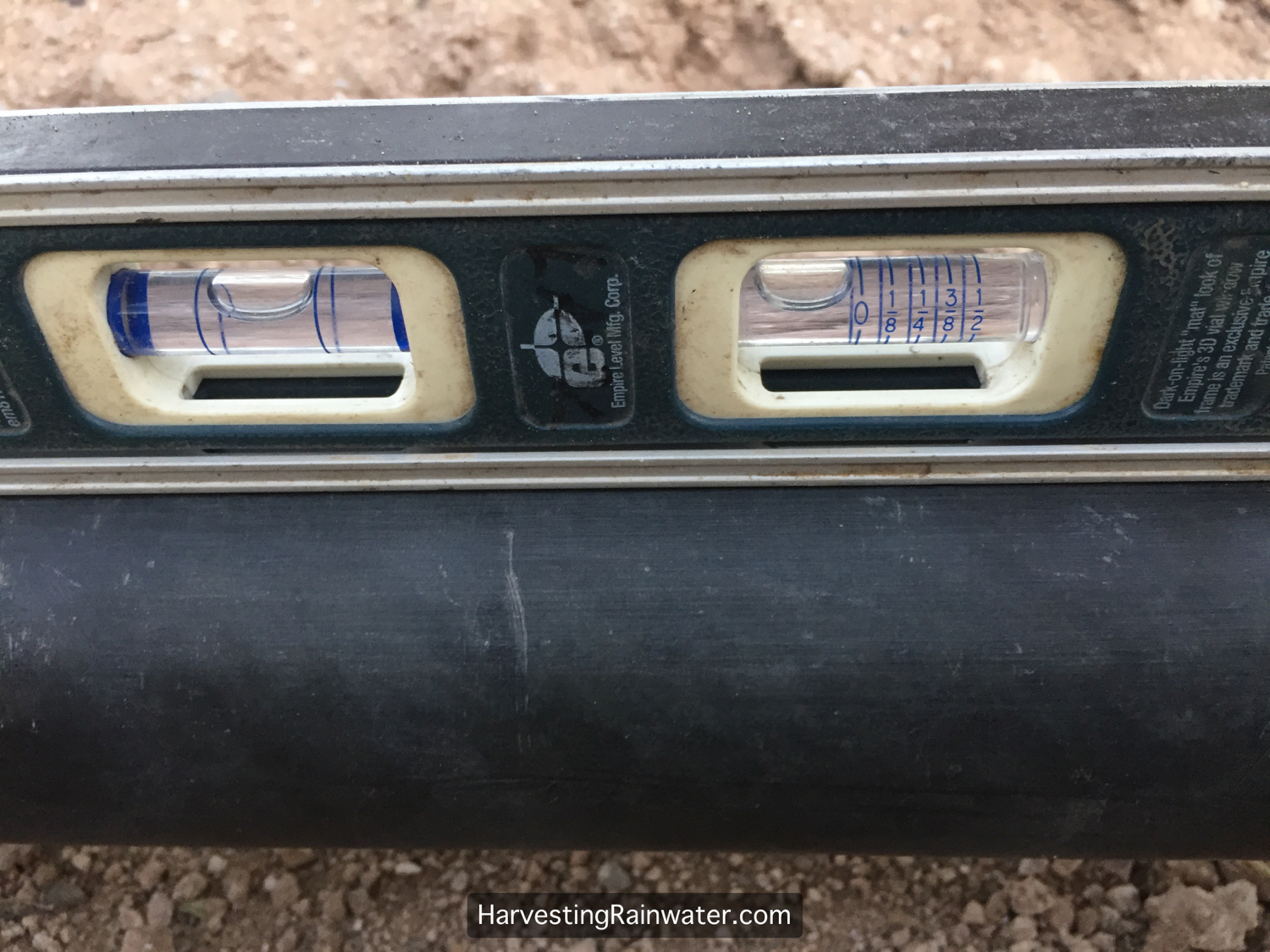
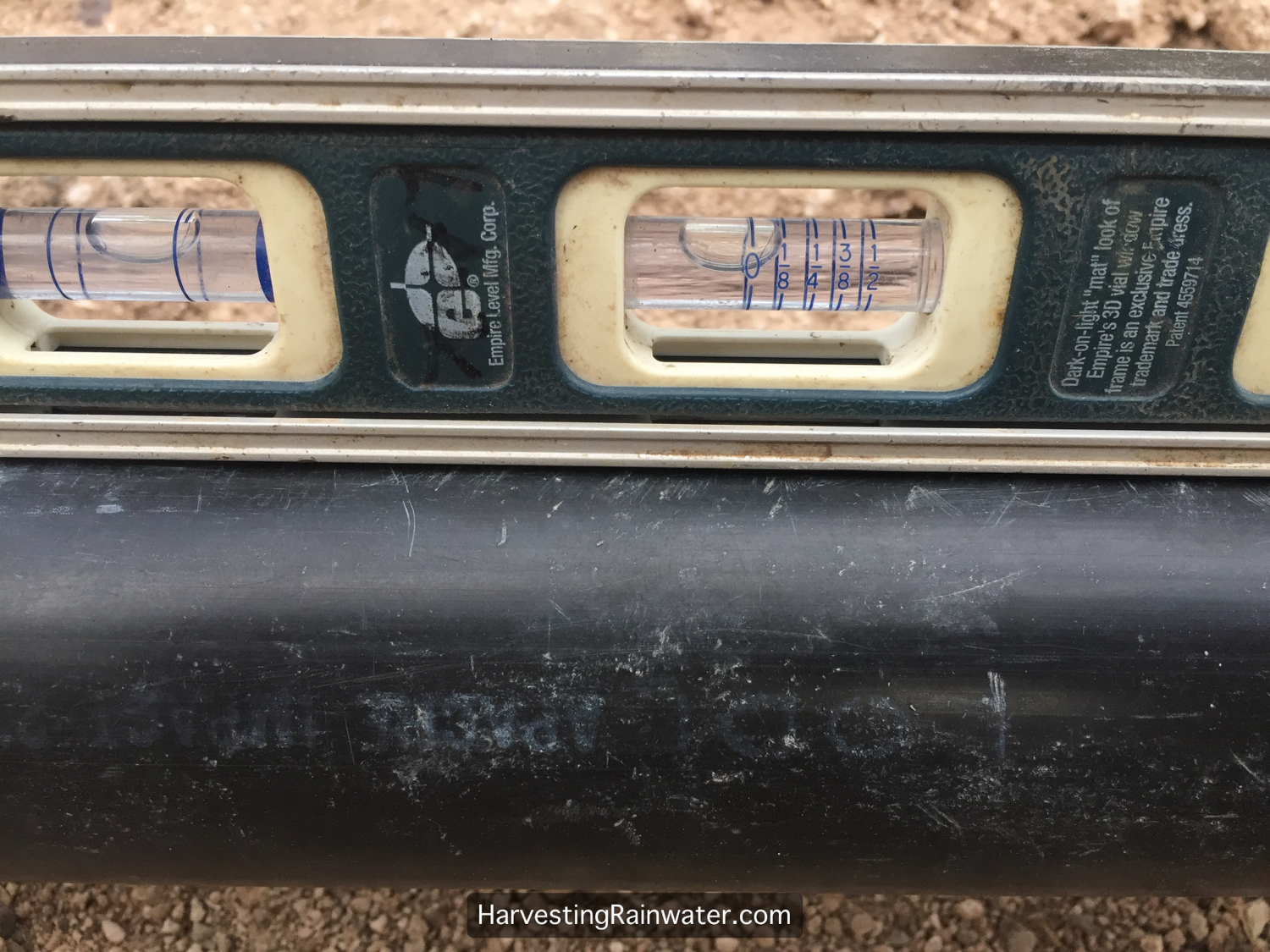
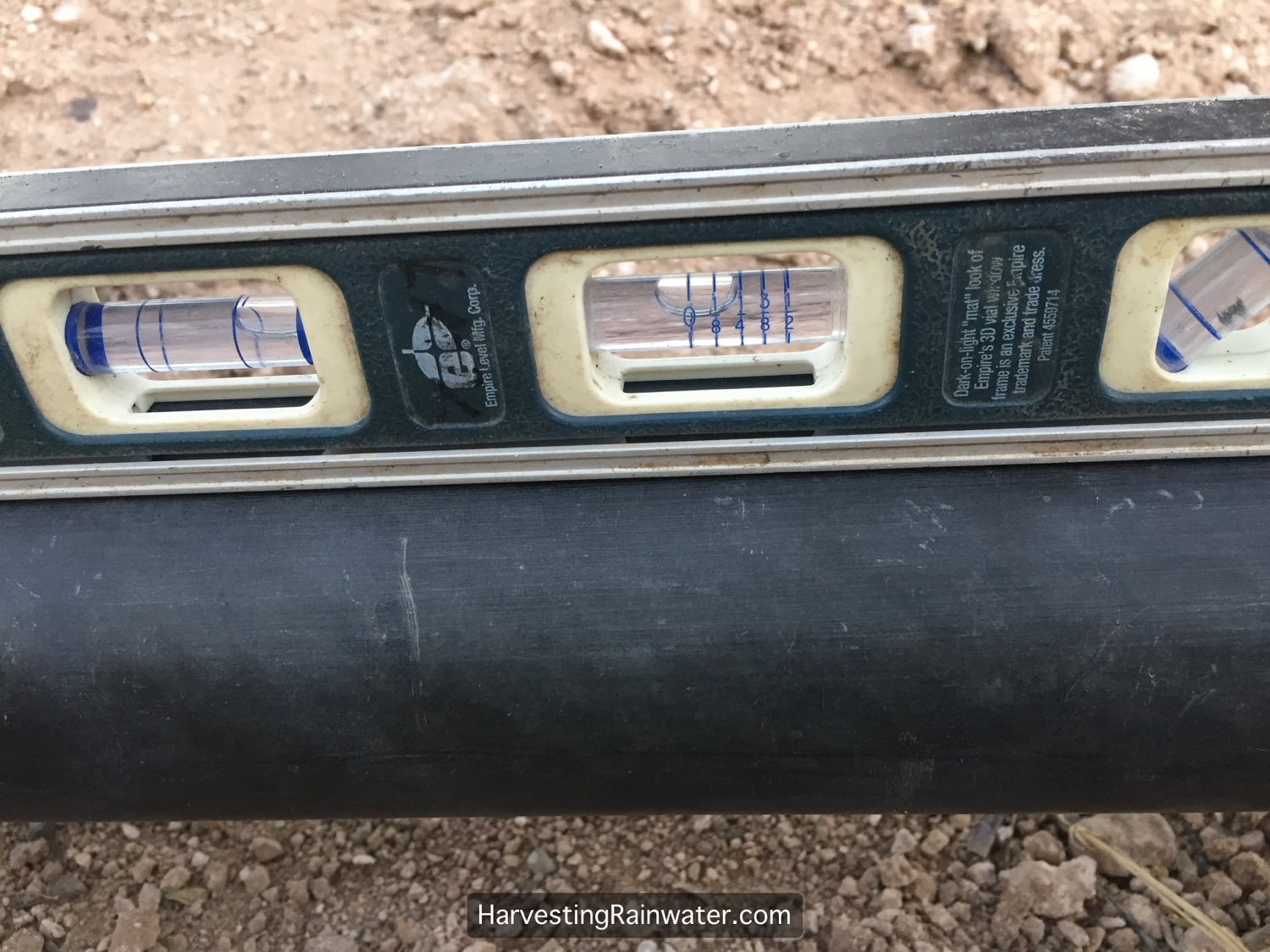
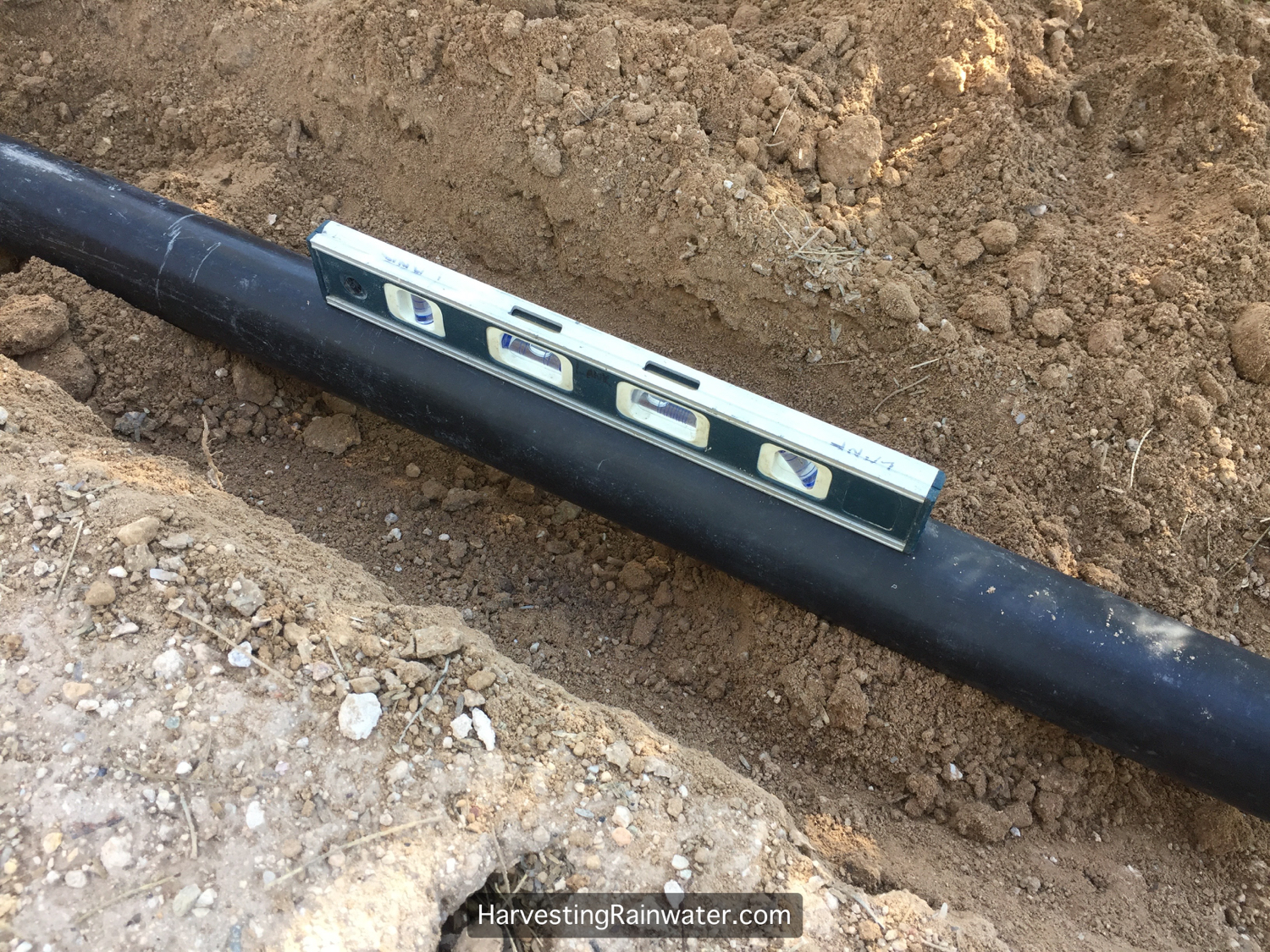
See next slides for close ups
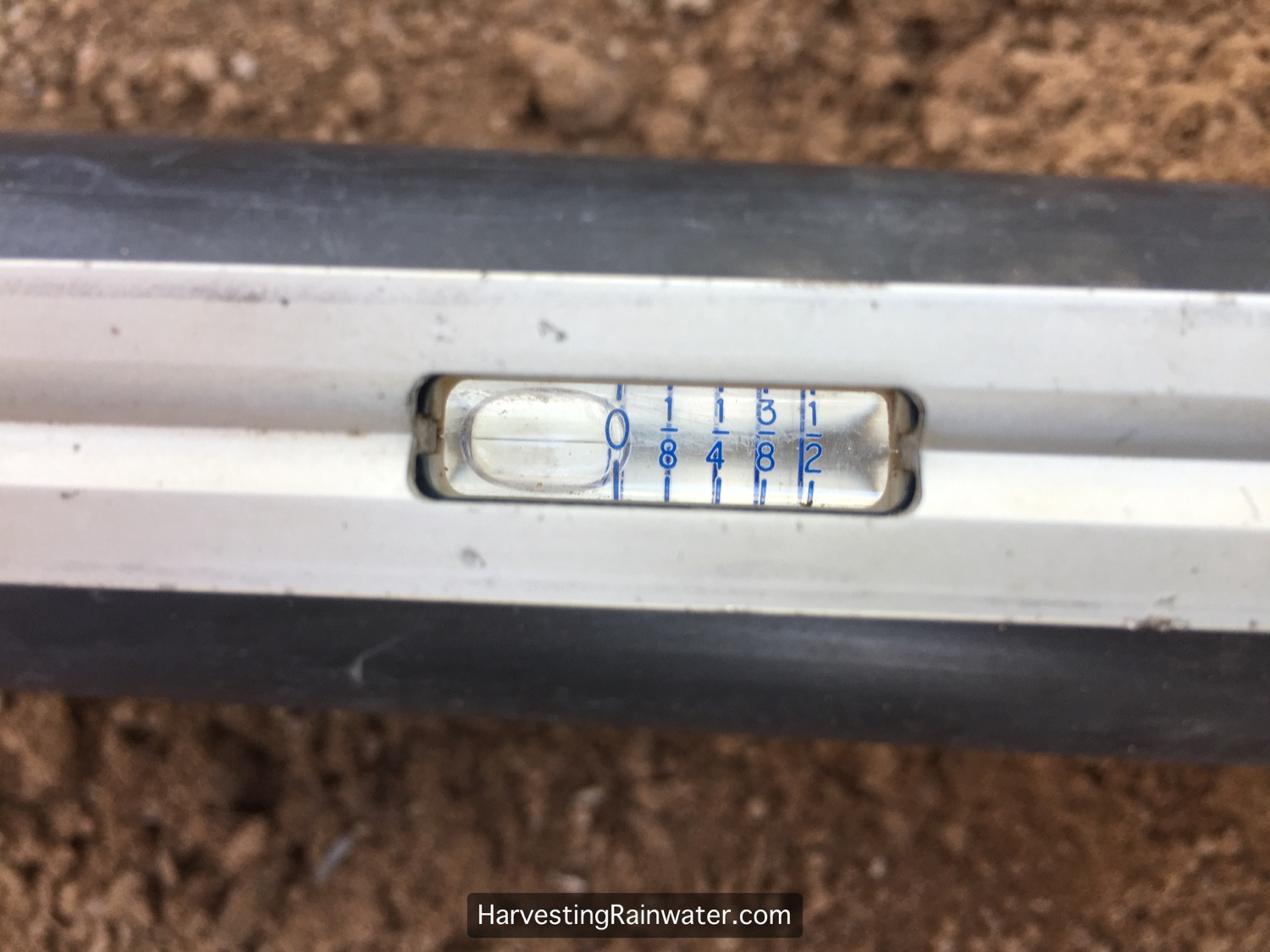
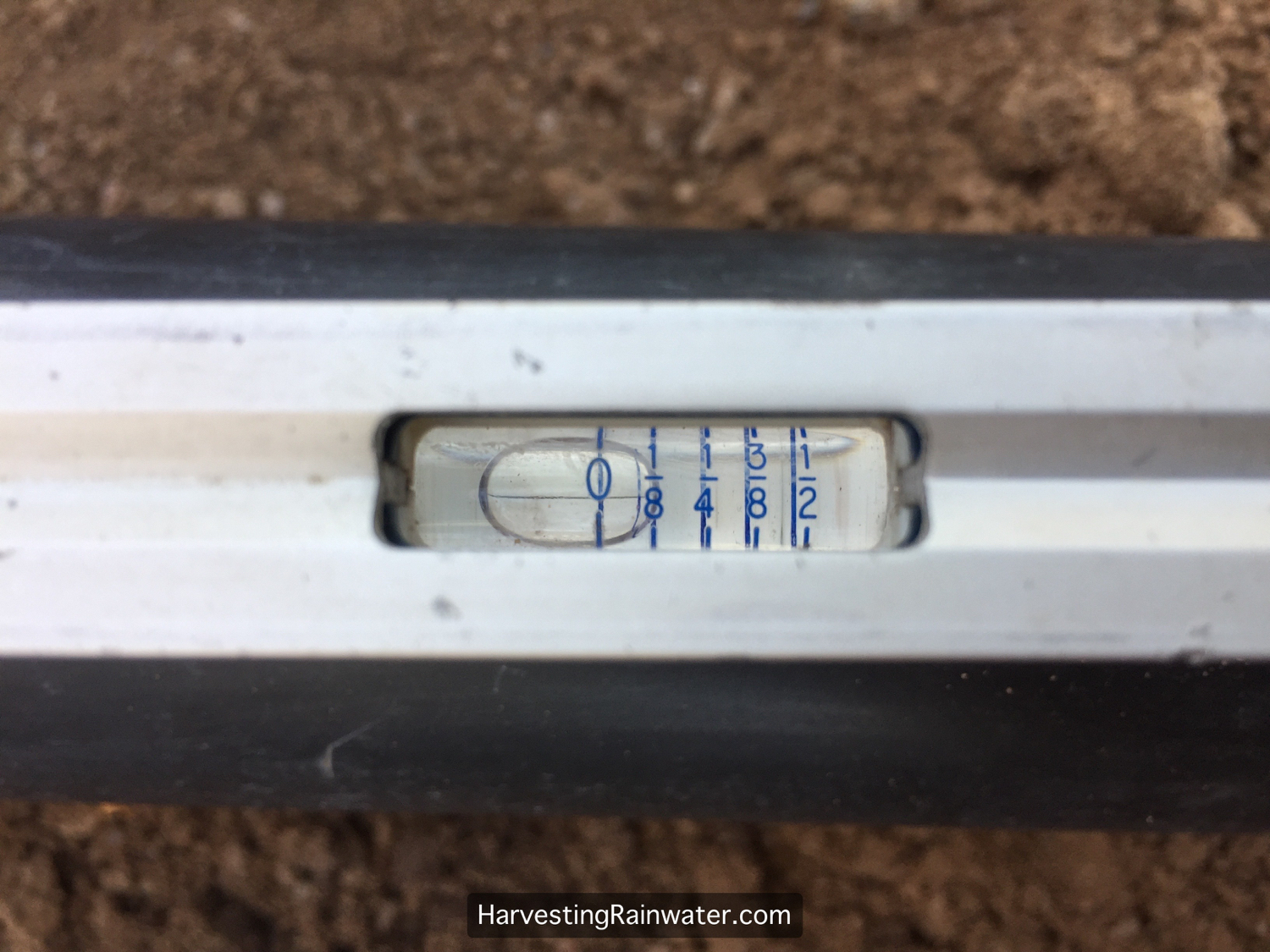
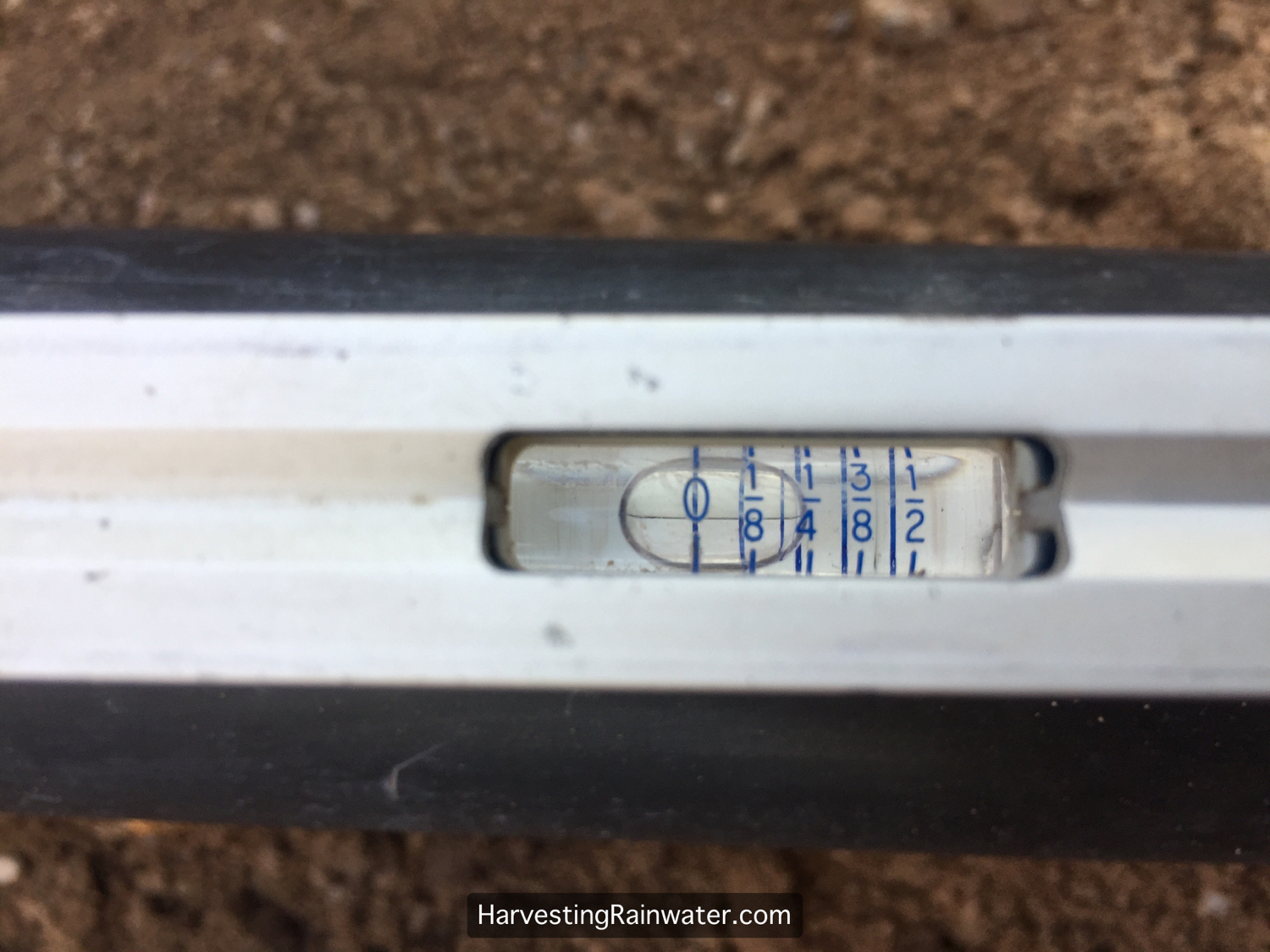
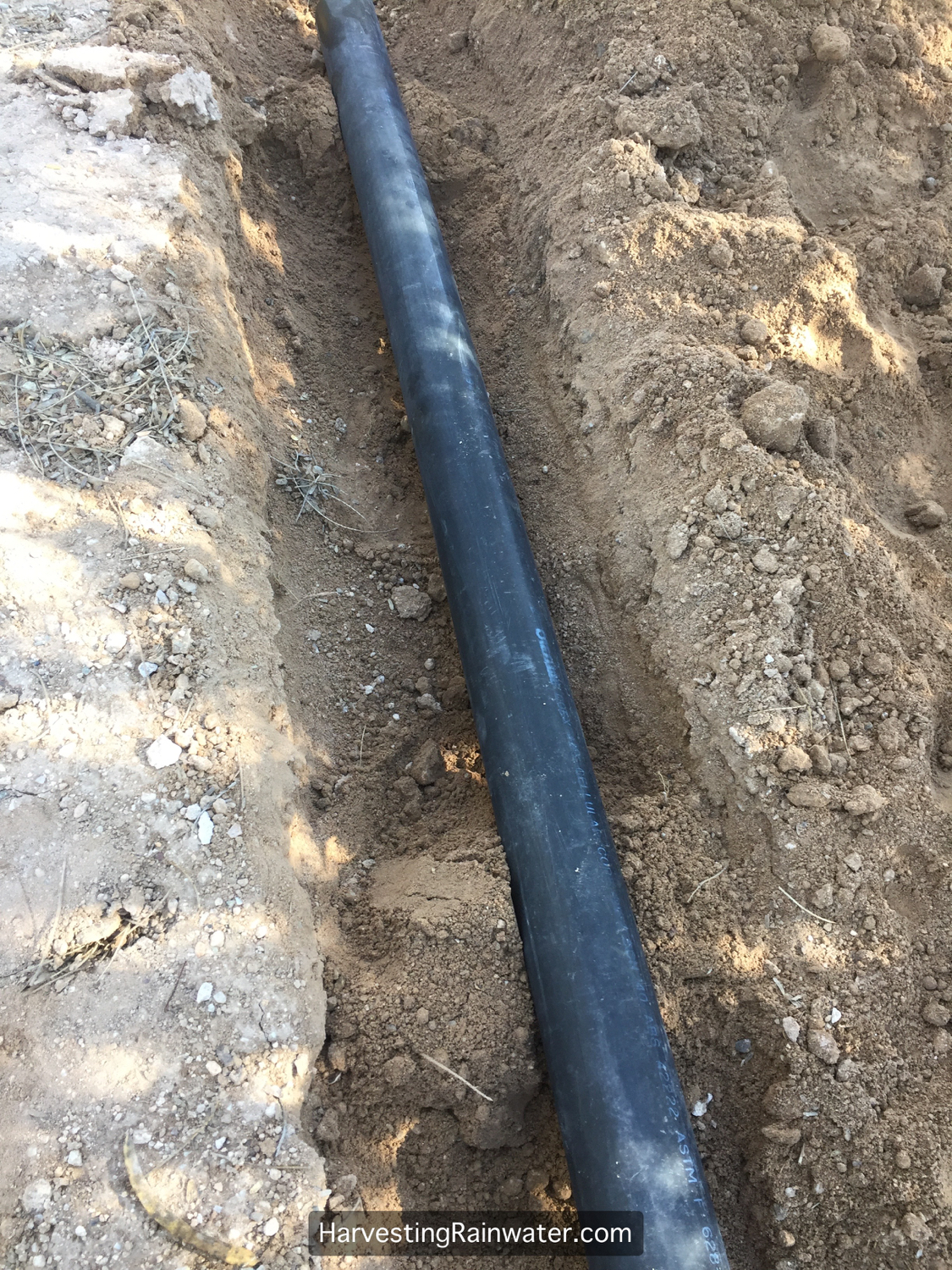
This makes it a lot easier to raise or lower the pipe as you check its levels. Much easier than having to remove the pipe and dig the trench deeper.
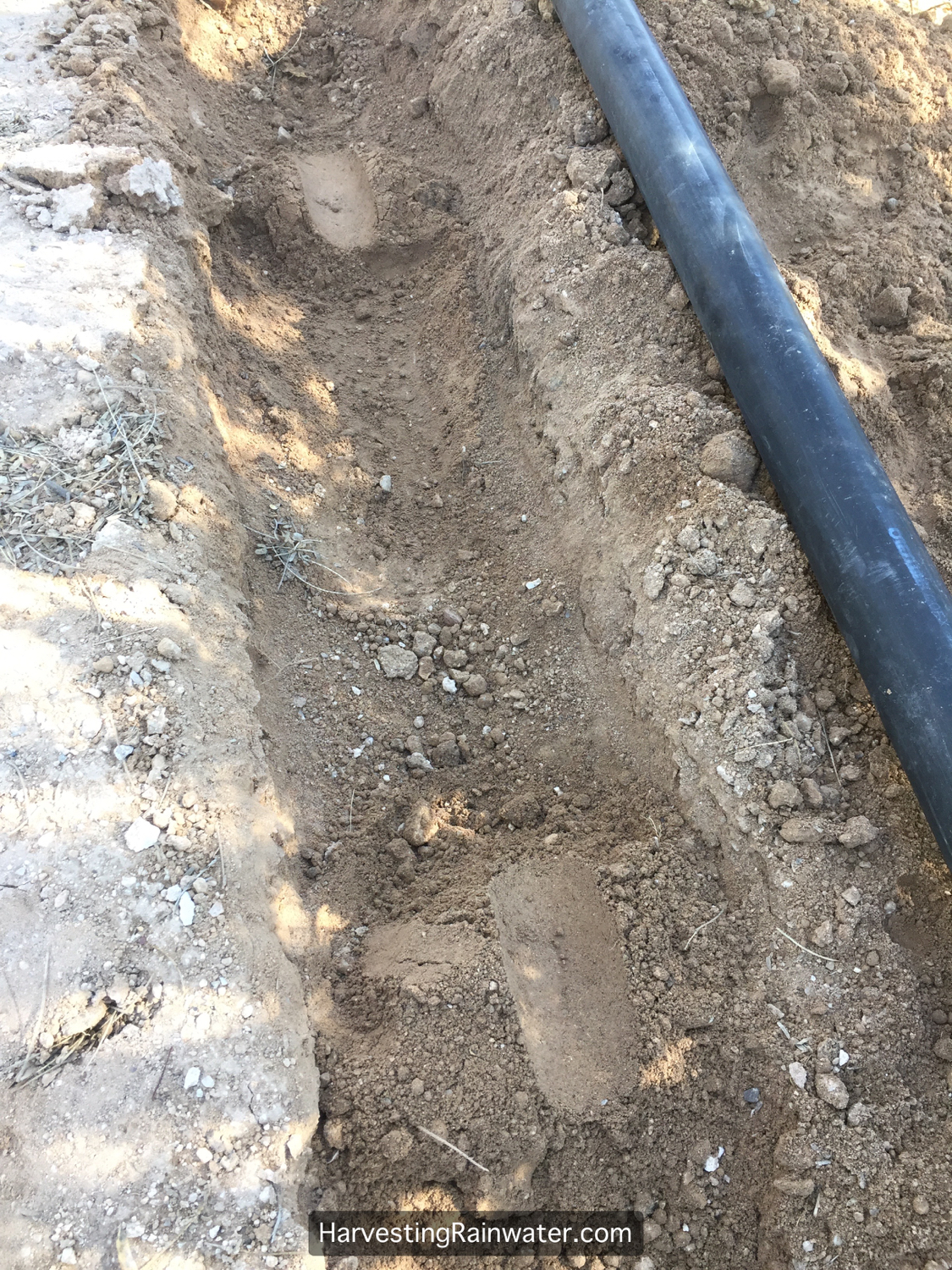
For more
See the new, full-color, revised editions of Brad’s award-winning books
– available a deep discount, direct from Brad:

Volume 2
See chapter 12, the greywater harvesting chapter of this book, for different gravity-fed greywater distribution systems and info on how to install them yourself, or direct someone else.
Ideally, you should plant rainwater before you plant any plant, then also plant greywater before you plant any higher water use plants, so you can freely irrigate those plants with free on-site waters. This book shows you how to do BOTH and more.
For dark greywater harvesting (the harvest of kitchen sink drainwater), see the appendix in this book that shows you how, and how we got it legalized in the state of Arizona.
